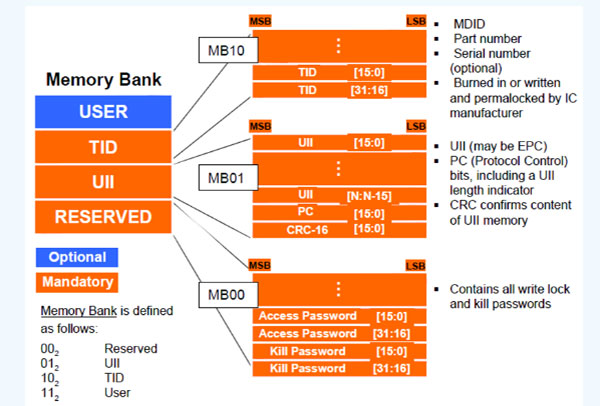We are all familiar with RFID technology, it runs through all aspects of our lives, but we may know little about their technical protocols.
For radio frequency, typical operating frequencies are:125KHZ, 13.56MHz, 869.5MHz, 915.3MHZ, 2.45GHz and other frequencies,Corresponding to: low frequency (LF), high frequency (HF), ultra high frequency (UHF), microwave (MW).
The labels of each frequency band have corresponding protocols: for example, 13.56MHZ has ISO15693 and 14443 protocols, while the main corresponding protocols for ultra-high frequency (UHF) are ISO18000-6B and ISO18000-6C (EPC C1G2) standard protocols. The agreement specifies passive backscatter, interrogator talk priority (ITF) and radio frequency identification (RFID) system requirements for operation in the frequency range of 860-960MHZ.
ISO18000-6B standard
This protocol is mainly used in the field of closed-loop control, such as tobacco and other Asset MANAGEMENT fields. The application is relatively mature, and the data format and standard are relatively simple. The reading data area is large, the only ID capacity in the world can reach 1024bits or 2048bits; the user data area is 98Bytes or 216Bytes; a maximum of 10 tags can be read at the same time; the data reading speed is 40kbps. Therefore, many factors limit the sustainable development of ISO18000-6B, which is bound to be replaced by EPC C1G2.
ISO18000-6C (EPC C1G2) standard
The agreement includes the fusion of Class1 Gen2 launched by the Global Product Code Center (EPC Global) and ISO/IEC18000-6 launched by ISO/IEC. As an open-loop control field such as logistics, it is adopted by major imported brand RFID suppliers with its excellent characteristics. For example, with higher reading speed, the data rate can reach 40kbps ~ 640kbps; the ID capacity is reduced, which can meet the vast majority of logistics applications; the number of tags read at the same time is large, and theoretically more than 1000 tags can be read; powerful functions, It has a variety of encryption methods and strong security; there are many areas, which are divided into product electronic code area (EPC/UII), global only electronic label identification number area (TID), user area (USER), reserved area (RESERVED).
The storage structure of ISO 18000-6C electronic label is as follows:

The EPC C1G2 standard has many advantages, such as strong versatility, compliance with EPC rules, low product price, and good compatibility. It is mainly suitable for the identification of a large number of items in the field of logistics and is in continuous development. It has greatly promoted the development of RFID electronic tags by local brand suppliers. It has promoted the popularization of domestic UHF, a non-contact identification technology, in China.
As an imported high-quality supplier of RFID, SICK provides UHF RFID that supports ISO18000-6C (EPC C1G2) protocol. As an industrial-grade automatic identification product, its performance is excellent. The company continues to innovate and improve, breaking boundaries and providing customers with high-quality solutions.
Contact: Adam
Phone: +86 18205991243
E-mail: sale1@rfid-life.com
Add: No.987,Innovation Park,Huli District,Xiamen,China